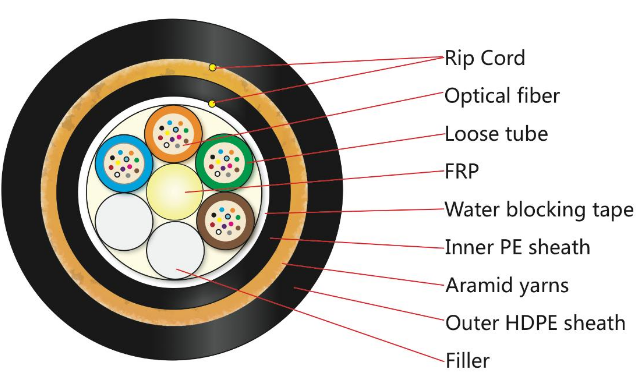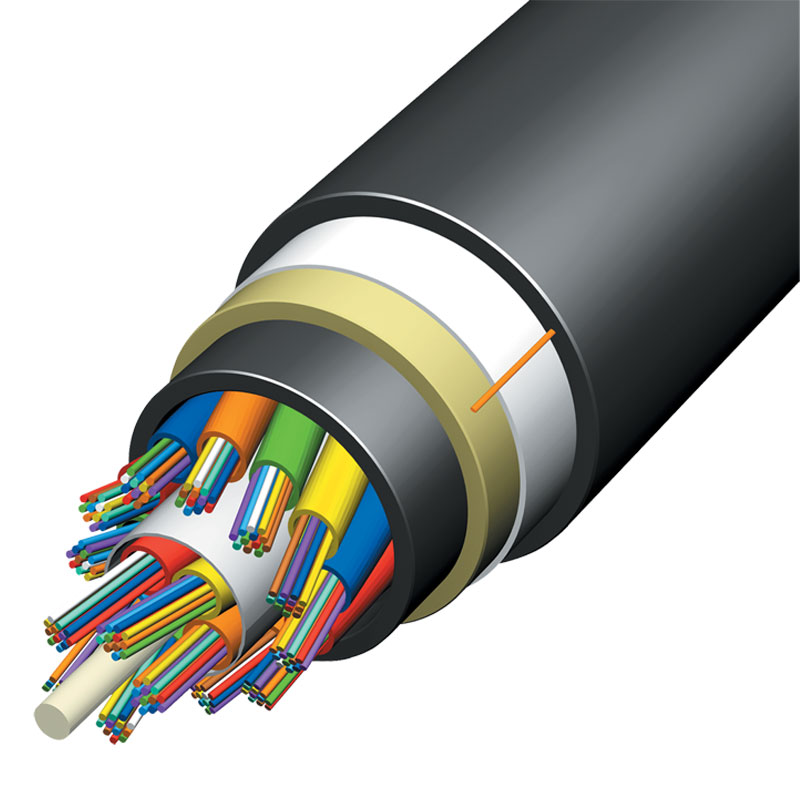- Related articles
- Optical Transceivers for Cisco SF250-48-K9-UK Switch
- All Cisco GLC-TE's information (List price, Specs, Datasheet PDF, Compatibility matrix)
- All Cisco DWDM-XENPAK-52.52's information (List price, Specs, Datasheet PDF, Compatibility
- What is mini GBIC transceiver?
- All Cisco CWDM-SFP10G-1610's information (List price, Specs, Datasheet PDF, Compatibility
- Used in 40GBASE-XSR4 Standard Optical Transceiver Models
- Applicable to 1000BASE-EZX Standard Optical Transceiver Models
- Optical Transceivers for Cisco WS-C3650-24PS-E Switch
- The Difference between PCI Express x1, x4, x8 and x16
- What Is Network Interface Card Architecture?

Definition of ADSS optical fiber cable
All-dielectric self-supporting (ADSS) is regarded as one of the best and highly recommended fiber cable. Majority of the professionals refer using this type of fiber optic cable due to its ability to self-support. Currently, the All-dielectric self-supporting (ADSS) is widely used by the electrical utility organisations as a communication medium. Consequently, the users of All-dielectric self-supporting (ADSS) incurs low installation cost since its easily and does not require technical experience to install. In reality, this type of the fiber optic cable is purposely designed to suit the ordinary users who don’t posses technical experience.
Structure of ADSS optical fiber cable
In the design of the cable, the internal glass optical fibers are supported with no strain, to maintain low optical loss throughout the life of the cable. The ADSS cable is jacketed to prevent moisture from degrading the fibers. The jacket also protects the polymer strength elements from the effect of solar ultraviolet light.
Using single-mode fibers and light wavelengths of either 1310 or 1530 nanometers, circuits up to 100 km long are possible without repeaters. A single cable can carry as many as 144 fibers.
Consequently, ADSS cable is up to 72 optical fibers in jelly-filled loose tube, laid up around a central non-metallic strength member. The cable is water blocked aramid yam reinforced and polyethylene sheathed. Surface printing for the cable includes sequential length marking at one-meter intervals.

Uses of ADSS optical fiber cable
ADSS is a “dry” water-blocked, loose tube cable that was originally developed from a military lightweight rugged deployable (LRD) field cable. It is now principally used for short span aerial installations—typically on roadside power distribution poles. It is suitable for spans up to 250 m or more, depending upon installation conditions.
Since the ADSS cable is non-metallic, it is ideal for applications near high-voltage power distribution lines for which it has become a standard. This product is also suited to single-point suspension applications such as down mine shafts or any application where the product has to support either a higher load than conventional terrestrial cable or a permanent or varying tensile load that is applied through the outer sheath.
Conclusion
Today, ADSS optical fiber cable plays a significant role in the communication industry. Its usage is gradually increasing with more people choosing it in expense of other fiber cable. Some of its outstanding features have enhanced its demand throughout the market. This article analyses the key applications of the ADSS optical fiber cable. The research showed that, ADSS optical fiber cable’s demand is high particularly in areas of transmitting high-voltage power.






















































